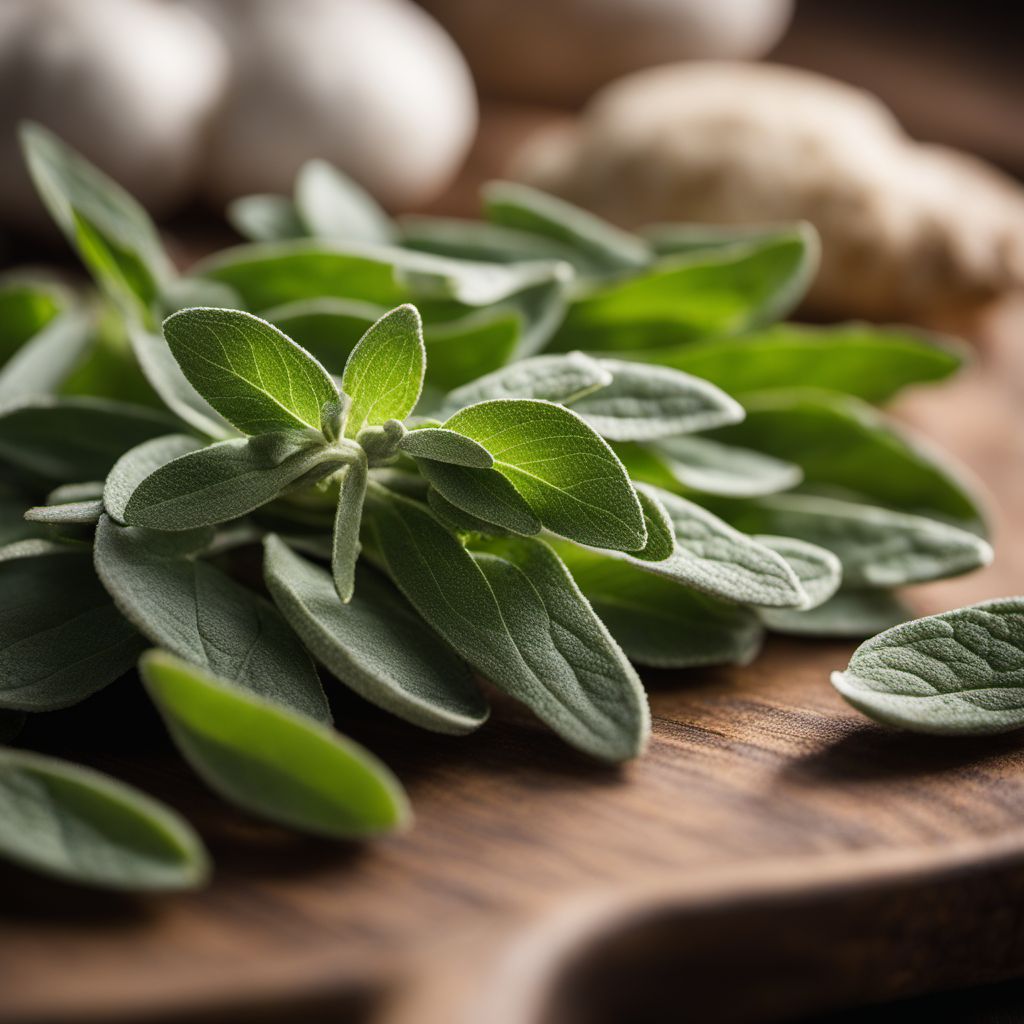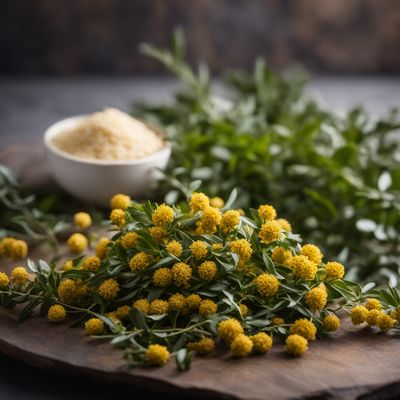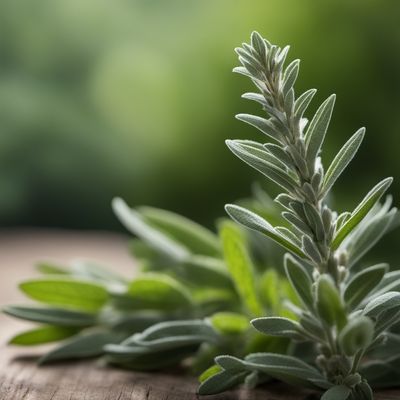
Ingredient
Sage and similar-
"The Herb of Wisdom: Exploring the Versatility of Sage and Similar Ingredients"
Sage and similar ingredients belong to the mint family and are characterized by their soft, velvety leaves and woody stems. They have a slightly bitter and earthy taste, with hints of eucalyptus and citrus. The leaves are typically gray-green in color and have a textured surface. When crushed or rubbed, they release a strong, fragrant aroma that is both savory and herbaceous. Sage and similar ingredients are known for their versatility, as they can be used fresh or dried, and are commonly used in both savory and sweet dishes.
Origins and history
Sage has a rich history dating back to ancient civilizations, including the Greeks and Romans, who considered it a sacred herb. It was believed to have healing properties and was used for medicinal purposes. Sage is native to the Mediterranean region and has been cultivated for centuries. It was introduced to other parts of the world through trade routes and exploration. Similar herbs, such as rosemary, thyme, and oregano, also have ancient origins and have been used in various cultures for their culinary and medicinal benefits.
Nutritional information
Sage and similar ingredients are low in calories and rich in essential nutrients such as vitamin K, vitamin A, and antioxidants. They also contain small amounts of minerals like calcium, iron, and manganese.
Allergens
Sage and similar ingredients are generally safe for consumption and are not commonly associated with allergies. However, individuals with known allergies to other herbs in the mint family should exercise caution.
How to select
When selecting sage and similar ingredients, look for fresh leaves that are vibrant in color, free from blemishes or discoloration. Avoid leaves that are wilted or have a strong, unpleasant odor. For dried sage, choose brands that are reputable and ensure that the leaves are still fragrant and not stale.
Storage recommendations
To maintain the freshness of sage and similar ingredients, store fresh leaves in a plastic bag or airtight container in the refrigerator. Alternatively, they can be wrapped in a damp paper towel and placed in a plastic bag. Dried sage should be stored in a cool, dark place in an airtight container to preserve its flavor and aroma.
How to produce
Sage and similar herbs can be easily grown in home gardens or pots. They thrive in well-drained soil and require ample sunlight. Planting seeds or purchasing young plants from a nursery are common methods of cultivation. Regular pruning and harvesting of leaves promote healthy growth.
Preparation tips
Sage and similar ingredients can be used in various culinary applications. Fresh leaves can be chopped and added to sauces, stuffings, or used as a garnish. They can also be fried to make crispy sage leaves, which add a delightful texture to dishes. Dried sage is commonly used in spice blends, marinades, and rubs for meats. When cooking with sage, it is best to add it towards the end of the cooking process to preserve its flavor.
Substitutions
If sage is not available, suitable substitutes include rosemary, thyme, or marjoram, which offer similar earthy and aromatic qualities.
Culinary uses
Sage and similar ingredients are widely used in Mediterranean, Italian, and Middle Eastern cuisines. They are commonly used in dishes such as roasted meats, poultry, stuffing, soups, stews, and pasta sauces. Sage is also a key ingredient in traditional Thanksgiving stuffing.
Availability
Sage and similar ingredients are commonly available in most regions, especially in Mediterranean climates. They can be found in grocery stores, supermarkets, and farmers markets.
More ingredients from this category

Jamé's sage
The Aromatic Herb of Wisdom

Curry herb
The Fragrant Spice: Curry Herb

Sage
"The Wise Herb: Unveiling the Secrets of Sage"

Borage
The Starflower Herb: Unveiling the Secrets of Borage

Greek sage
The Mediterranean Herb

Other species and hybrids of genus Salvia, not elsewhere mentioned
Exploring the Hidden Gems of the Salvia Genus: A Culinary Adventure